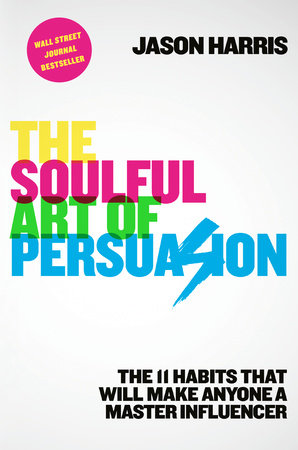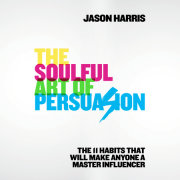Chapter 1
Turn and face the strange
So I turned myself to face me
But I’ve never caught a glimpse
How the others must see the faker
I’m much too fast to take that test
—David Bowie, “Changes”
My idol has always been David Bowie. Nobody has ever been better at following the advice often attributed to Oscar Wilde: “Be yourself, everybody else is already taken.” Over five decades in the music, fashion, and entertainment industries, Bowie never stopped exploring who he was and finding new ways to inspire others with his gender-bending, music-blending creativity. Most of all, as a role model, he made it all right for me and many others to be our own weird and wonderful selves. He made anyone and everyone comfortable to fly their unique freak flag.
Growing up as a child of the 1980s, I caught the second and third waves of Bowie’s work. “Let’s Dance,” “China Girl,” and “Under Pressure” were the first hits that made me take notice: “Let’s sway / While color lights up your face / Let’s sway / Sway through the crowd to an empty space.” Bowie swayed me. He convinced me because he was one of a kind. He persuaded me with his stories. And from there I was off with all-night sojourns into the entire Bowie canon. His albums mixed an astonishing array of genres, from art rock to glam rock to post-punk, electronica, hard rock, jazz, new wave, and unfortunately even disco. There was nothing he couldn’t do.
I’m not alone in my obsession. After all, he is one of the bestselling recording artists of all time. Without him there is no Cure, U2, Lou Reed, Joy Division, LCD Soundsystem, or even Lady Gaga. Rolling Stone magazine recently called him “the greatest rock star who ever fell to this or any other world.”
But with Bowie, the main attraction was never just “Changes” or “Ashes to Ashes”; it was Bowie—or Ziggy Stardust, Aladdin Sane, the Thin White Duke, or one of his endless supply of alter egos. Before he was Bowie, David Robert Jones was a struggling musician moving from band to band and churning out a string of singles nobody bought. Even after he changed his name to David Bowie, his first solo album went nowhere—and it’s easy to see why. In those years, Bowie was still trying to fit into existing categories of what he thought people wanted him to be. Whether he was playing blues covers or folk, it all sounded like something people had already heard. It was all too familiar.
And guess what? Nobody wanted anything to do with that David Bowie.
But by 1969, when he dropped “Space Oddity” days before the launch of NASA’s Apollo 11, he was on his way to becoming an international rock god that would change the shape of popular culture forever. In the decade that followed, he went on a creative tear unequaled in the history of rock. From the albums The Man Who Sold the World, Hunky Dory, and The Rise and Fall of Ziggy Stardust and the Spiders from Mars on through to Young Americans, Heroes, and the posthumous release of the haunting masterpiece Blackstar, Bowie was constantly reinventing himself, incorporating new ideas, pushing boundaries, and challenging assumptions every chance he got—even from beyond the grave.
The timing of this renaissance was no accident. Bowie spent the two years between his first failed solo album and the release of “Space Oddity” discovering new influences and exploring new ways of making art. He lived at a Buddhist monastery, studied dance, drama, and mime, and helped create an experimental arts lab. He was finding ways to be his true self and express it better. He went deep into himself so that he could understand what he wanted to say and convince all of us to pay attention.
Most of all, he found his own vision and learned to always trust it.
What made him irresistible as an artist is that he wasn’t trying to be the next Jagger or Dylan. He was becoming the first and only David Bowie, a man to whom old categories just didn’t apply. He wasn’t blues or pop, psychedelic or soul, man or woman, gay or straight. He didn’t have a single identity. What united everything he did was that it came from David Bowie being an original. And that was enough.
Growing up outside of Washington, D.C., in conservative Fairfax County, Virginia, I would pore over Bowie’s every album, lyric, and persona. I didn’t always know what I was feeling when I listened to a Bowie track, but I knew I felt something soulful. And it was way more interesting than the band Wham!
At the time I discovered Bowie, I was already the semi–black sheep of my family. My parents and a lot of my relatives are teachers and academics. My interests were incomprehensible to them. I was not a bookworm; I was a shameless television addict obsessed with Knight Rider and The Greatest American Hero. I also loved watching the thirty-second stories sprinkled between the TV shows. I still think about ads like “Oh yeah!” from the Kool-Aid Man, “How many licks does it take to get to the Tootsie Roll center of a Tootsie Pop?” or “Leggo my Eggo”—a tagline that my sister and I repeated countless times at the breakfast table. Even today I find myself saying “Time to make the donuts”—from the Dunkin’ Donuts ads of my childhood—when I head off to work. I would break down every component of these old ads, from the music to the acting to the direction, analyzing what made them work. Did that ad persuade me to buy the thing they were hawking? This was definitely not normal behavior for a twelve-year-old, certainly not in my family of intellectuals and educators.
It took David Bowie to show me that weirdness isn’t something to fight against—it’s something to wrap your arms around. Bowie gave me license to be my own strange and unique self.
Ironically, Bowie’s first and only office job was as an artist at Nevin D. Hirst Advertising in London. He washed out of that gig pretty quickly. But even later on, he maintained a close relationship with the advertising world, appearing in TV spots for everything from Pepsi to Louis Vuitton.
It may sound counterintuitive that I learned the importance of authenticity from David Bowie—the master of self-creation, the man of endless identities—but it makes sense. Yes, he was a mess of contradictions and radically different personalities, but it was all original and true to Bowie every single time. You may not have understood what he was up to, but you knew he was showing you a unique side of himself and that he didn’t care what anyone else thought. You felt it in your bones.
And that quality of being authentically yourself is at the heart of all persuasion.
Character Is King
Persuasion is about personal character, not facts or argument. The most powerful modes of persuasion don’t have much to do with evidence, argument, or logic. In fact, often what persuades people isn’t the substance of what’s being said but the source--in other words, the person saying it. Aristotle knew this more than two millennia ago. As he put it, “We believe good men more fully and more readily than others . . . [A speaker’s] character may almost be called the most effective means of persuasion he possesses.”
This makes sense. On most issues, we just don’t have the knowledge, time, or expertise to figure out on our own which side to take. I trust my doctor when he tells me I need to take vitamin D supplements or to stay off my sprained ankle for a week. It isn’t the science that convinces me--I didn’t go to medical school and I have no idea why we need so much damn vitamin D, but my doctor went to medical school and studied to know her craft, and the good ones project the conviction and character to make us listen.
When a politician tries to persuade you about tax reform or national security or immigration, most of the time you don’t have enough information to decide based on the facts alone. You’re deciding based on whether or not this person seems well intentioned, trustworthy, confident, and sincere. You’re deciding based on the individual’s perceived character.
What I mean by character—or, more important, what Aristotle meant—isn’t just the list of ethical rules you try to follow or the personal beliefs you hold. Your character is also made up of the habits and dispositions that you display without thinking. When a brave person sees a burning school, they don’t hesitate to run into the building to help the kids inside. When an honest person finds a lost wallet, they do their best to return it to its owner and don’t consider for a second taking the cash inside. A sincere person tells the truth reflexively, not after weighing the pros and cons of being truthful.
So the character traits that make you persuasive also need to flow from your core. People need to know that they’re getting a glimpse of the real you--a peek at something that you don’t even know that you’re showing them.
Copyright © 2019 by Jason Harris. All rights reserved. No part of this excerpt may be reproduced or reprinted without permission in writing from the publisher.






